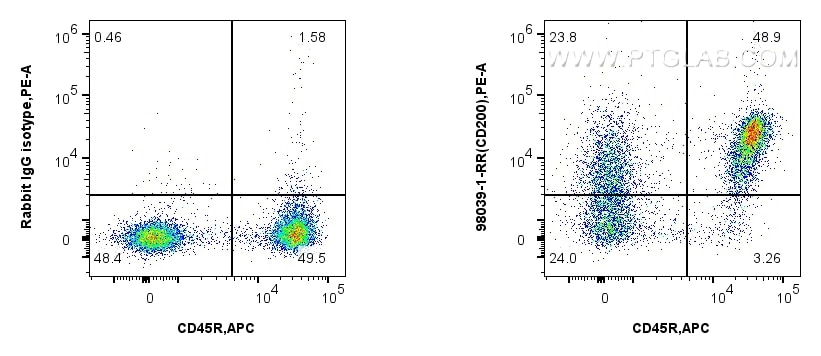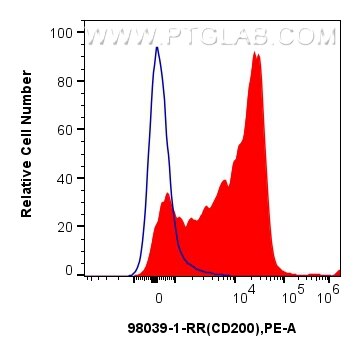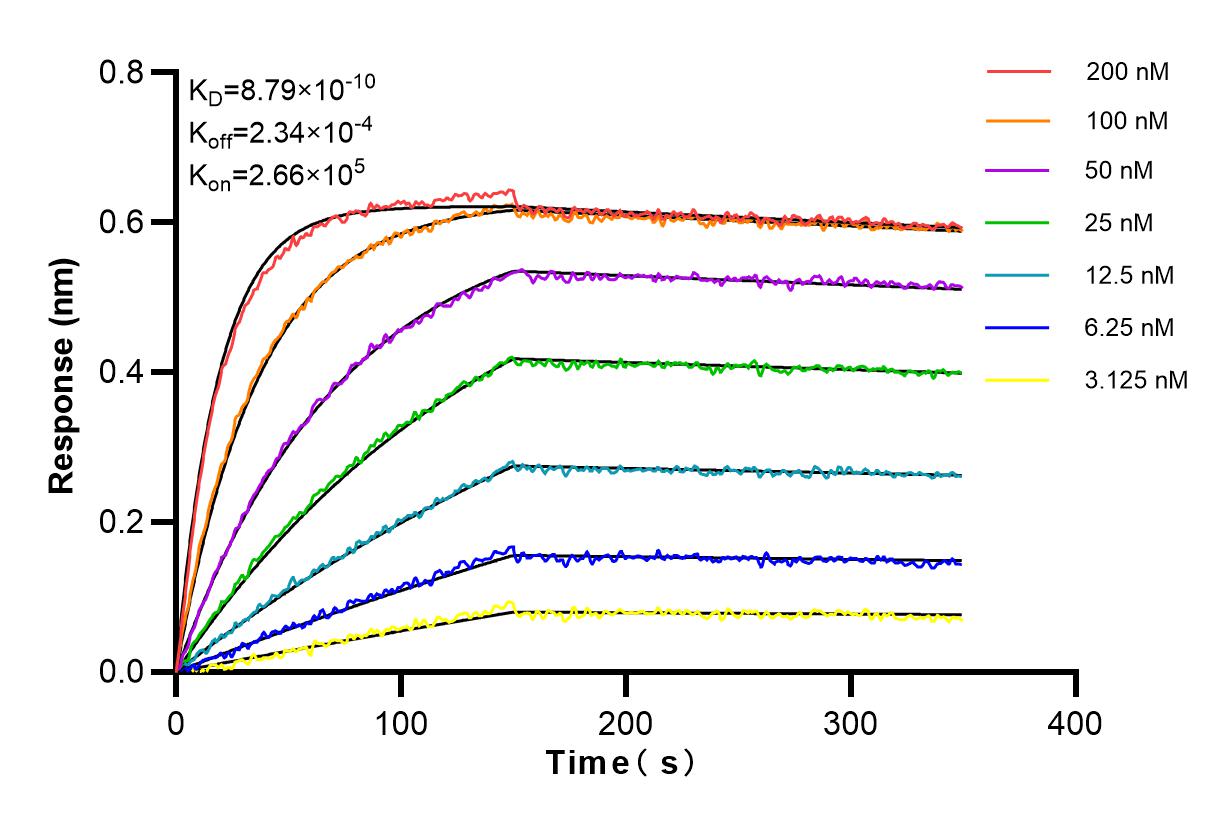Validation Data Gallery
Tested Applications
| Positive FC detected in | mouse splenocytes |
Recommended dilution
| Application | Dilution |
|---|---|
| Flow Cytometry (FC) | FC : 0.25 ug per 10^6 cells in 100 μl suspension |
| This reagent has been tested for flow cytometric analysis. It is recommended that this reagent should be titrated in each testing system to obtain optimal results. | |
| Sample-dependent, Check data in validation data gallery. | |
Product Information
98039-1-RR targets CD200 in FC applications and shows reactivity with mouse samples.
| Tested Reactivity | mouse |
| Host / Isotype | Rabbit / IgG |
| Class | Recombinant |
| Type | Antibody |
| Immunogen |
Fusion Protein 相同性解析による交差性が予測される生物種 |
| Full Name | CD200 antigen |
| Calculated molecular weight | 31 kDa |
| GenBank accession number | / |
| Gene Symbol | Cd200 |
| Gene ID (NCBI) | 17470 |
| RRID | AB_3672186 |
| Conjugate | Unconjugated |
| Form | |
| Form | Liquid |
| Purification Method | Protein A purfication |
| UNIPROT ID | O54901 |
| Storage Buffer | PBS with 0.09% sodium azide{{ptg:BufferTemp}}7.3 |
| Storage Conditions | Store at 2-8°C. Stable for one year after shipment. |
Background Information
CD200, also known as OX2, is a type I transmembrane glycoprotein that belongs to the immunoglobulin superfamily (PMID: 3032785). It contains two extracellular immunoglobulin domains, a transmembrane and a cytoplasmic domain. CD200 is expressed on a variety of cell types, including thymocytes, B lymphocytes, a subset of T lymphocytes, follicular dendritic cells, neurons, and endothelial cells (PMID: 3032785; 10981966). CD200 binds to its receptor, CD200R, which is primarily expressed by myeloid and T cell lineage (PMID: 15187158). The CD200-CD200R interaction plays a role in immunosuppression and suppression of anti-tumor immune responses (PMID: 22020332).
Protocols
| Product Specific Protocols | |
|---|---|
| FC protocol for CD200 antibody 98039-1-RR | Download protocol |
| Standard Protocols | |
|---|---|
| Click here to view our Standard Protocols |



